Business
A Peek into the Economic Prospects for Gilgit-Baltistan with Provincial Minister Finance Mr. Javed Ali Manwa
Published
3 years agoon

Politics and economics are deeply interwoven. The inapt political class and maimed political institutions that do not allow the formation of well-functioning governments are often cited as important reasons behind a country’s disappointing economic results over time. Since the 1970s, Gilgit-Baltistan has been in a state of political limbo, being ruled by profit NGOs under a sub-constitutional status for a long period. The political set-ups that ruled with the motive of change either lacked support or proper political education. However, things evolve. With the world moving fast and GB trying to catch up, tables have turned for the politics of Gilgit-Baltistan. Now that a political party that champions revolution and innovation in every sphere of state affairs has gained power in the region, the nature of politics has shifted. With the support from youth, Pakistan Tehreek-i-Insaf (PTI) has brought many educated personalities into the ministries in the region, and the country as well.
One of such educated and politically mature enthusiasts is Mr. Javed Ali Manwa, the current finance minister of Gilgit-Baltistan. Hailing from district Nagar of Gilgit-Baltistan, Mr. Manwa comes from a family with a political career spanning over 40 years. He won the 2020 GBLA-elections as an independent candidate and joined PTI as the youngest legislator of Gilgit Baltistan.
In his interview with The Karakoram, the finance minister accentuated many stumbling blocks in Gilgit-Baltistan’s way for development. He also briefed about the government’s plans and proposals for the economic future of Gilgit-Baltistan.
TKM: It is widely known that you have broad experience in the development sector of Gilgit-Baltistan as well as a large network of connections, and are widely regarded as the most energetic and apt minister in the country. Tell us about how you got into this all. Also please let our readers know about your motives, expertise, as well as your aspirations for the growth of Gilgit Baltistan.
Ans: I hold an M.Phil. degree in Government and Public Policy and enjoy a broad experience of work with the United States Agency for International Development (USAID), United Nations Development Program (UNDP), FAFEN, UMD, and SCF programs; Because of such experiences, I was able to have a good understanding of the development sector.
As far as the question of how I came into this is concerned, my uncle’s untimely demise heaved me into politics. I belong to a family who had decades-long political experience, and I knew somewhere deep down that my destiny lies in politics. However, I did not expect to enter politics so soon. After my uncle passed away, the political expectations of my family gravitated towards me. After three and a half years of trying to find an alternate within-group, I entered Gilgit-Baltistan’s political ground. My first effort in elections was successful, and I am grateful to God for everything. The youth’s support was extraordinary, especially in a culture where conservatism predominates and liberalism is rare.
TKM: What is your view about the economic potentialities of Gilgit-Baltistan ? Also, how can these potentials be employed for the development of Gilgit-Baltistan?
Ans: We can see much evolution in the political sector from the beginning till now; therefore, we don’t have a predefined developmental agenda over here due to a lot of obstacles. We discover a lot of transitions some of which are extremely complicated, particularly in terms of finances. But there is a lot to learn.
Gilgit-Baltistan is an embryonic region; it brims with heterogeneity. In addition to having several mineral resources, we have a beautiful ethnic patchwork that should be cherished. Unfortunately, we lack the capacity to amalgamate these two strengths we possess. However, I envision this diversity to become my strength while planning for Gilgit-Baltistan’s development. Our youthful legislators now have such visions which have enabled them to transform their weaknesses into strengths.
To make up for the previous deprivations for the development of this region, there must be a concerted effort made with the collective will. From now on, we shall work together to ensure a good future for future generations, with no religious, political, or philosophical differences. For me, progress does not only imply the construction of roads; rather, it also entails being united amid many scorching divisions. National projects, such as farm and agricultural projects will also be addressed in the new policies.
TKM: Please tell us about your plans for the tourism industry. How well Gilgit-Baltistan is doing as far as the sector of tourism is concerned?
Ans: As far as tourism goes, Gilgit-Baltistan has a lot of potentials. Every year, 22 lac tourists visit this region. Though this is beneficial for some individual tourism industrialists, we have poor revenue generation collectively. From now on, we will implement a policy that is based on non-tax revenue generation such as insurance cards, and hotel and resort service charges. We have also planned to establish a proper arrangement and various partnerships.
TKM: As an enthusiastic young legislator of the Gilgit-Baltistan Assembly, you have presented the Budget for the Financial Year 2021-2022. Can you please shed light on some of the key aspects of this budget?
Ans: A well-planned budget has a different outlet at the outset. First, we discover expenditure management and plan accordingly. We had a feasible space in non-development areas, which is why we have incorporated in the new budget initiatives in the sectors of education, health, IT startups, and up-gradation in the power system of Gilgit city. New policies are made based on fresh data for which we are planning to open data research centers that will aid the government in analyzing the situation, and understanding the needs, and requirements of people in a better way.
TKM: You mentioned various sectors as target areas of your new developmental policy under budget for FY 2021-2022. How these sectors will be arranged by order of priority, and how different regions of Gilgit-Baltistan will be accommodated under the new budget depending upon the level of development there?
Ans: As I have mentioned earlier, we are making economic planning and decision-making data-driven. So far, decisions were made based upon personal observations and opinions due to which budget allocation would lack fairness. Now, our policy is to base our financial decisions upon data collected objectively, so that a fair allocation of resources can be ensured. Various financial indicators will be used to determine areas of priority and stress would be laid on these areas in our economic policies accordingly. Similarly, different districts of Gilgit-Baltistan will be accommodated under the new budget on an equity basis, and the regions lagging behind in development will be given an uplift. Our focus is to avoid ill-planned financial policies that will come back haunting the already underdeveloped region in the long run.
TKM: Being a young leader yourself, we would like you to convey your message to the youth of Gilgit-Baltistan, particularly to the students of KIU?
Ans: You have to build narratives around potentials, and Gilgit Baltistan’s potential is founded in unity rather than antagonism. The geo-strategic, as well as eco-economic importance of Gilgit-Baltistan due to its potential of becoming a connectivity hub via the China-Pakistan Economic Corridor (CPEC), has opened up new vistas of immense developmental opportunities for it along with some risks. The global political forces are at work to sabotage CPEC by playing on ethnic and sectarian disharmonies in the region. However, the young and educated minds must grasp the sensitivity of the situation and counter such nefarious efforts by coming together. If we want Gilgit Baltistan to prosper, we must put the sixteen-lac people to work in a united manner. Surely, our youth will play a critical role in this process and carry our region to new heights of glory and prosperity.
Interviewers:
Manahil Aamir, Urooj Jamal and Imran Ali.
About Author
The Karakoram Magazine
The Karakoram Magazine seeks high-quality, unpublished,nonfiction, first person articles relevant to Gilgit-Baltistan and topics as varied as Geo Strategic & Economic Significance of GB, Arts & Literature, Tourism & Hospitality, Culture and heritage, Education and technology, Health & Wellbeing, Climate Change and Wildlife, Economic & Trade, Sports & Recreations, Youth & Women empowerment and Achievements of Illustrious People of GB in different fields etc.
You may like
-


A Panacea to the Problems of Himalaya-Karakoram-Hindukush Region
-


The Sinking Titanic
-
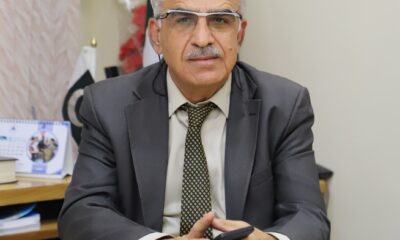

An Exclusive Interview with the Vice-Chancellor
-


SCO – Connecting People Across the Mountains
-


A door to flouting stereotypes in the Realm!
-
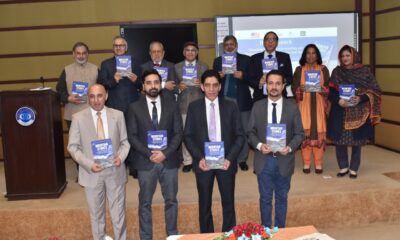

A book on mountain studies launched by Karakoram International University, Gilgit
Business
Potential of Gilgit-Baltistan’s Gemstone Industry
Published
3 years agoon
January 27, 2023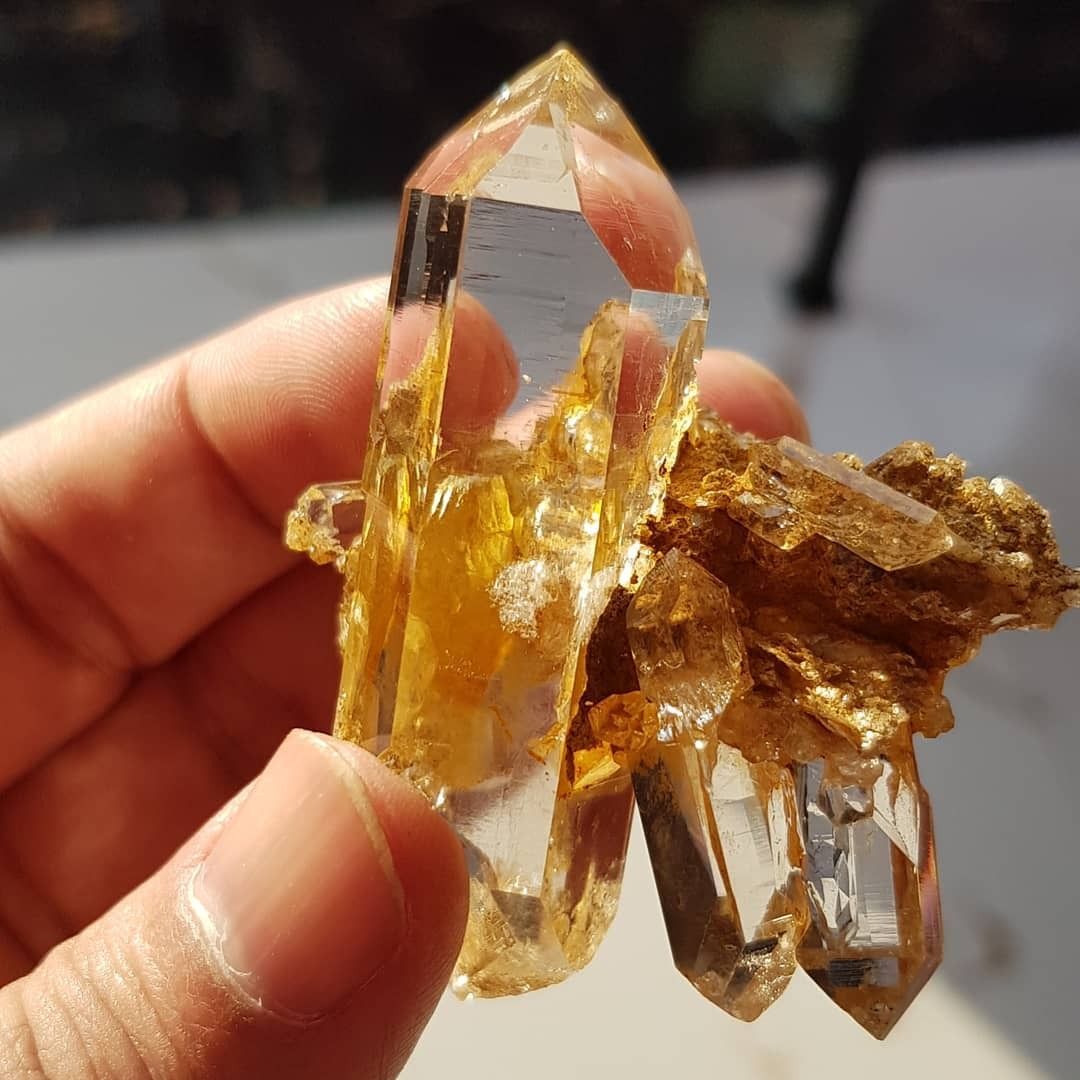
Given the abundance of mineral treasures and other—few discovered and mostly untapped—natural resources in their gigantic mountains and unique terrain, it would not be an exaggeration to call the region of Gilgit-Baltistan a ‘jewel in Pakistan’s crown’.
The Gilgit-Baltistan region, despite being a resource-rich region with an ample amount of minerals and precious stones like marble, gemstones, and numerous other minerals, cannot attain a complete economic dividend due to its remoteness from Pakistan’s center and southern commercial market.

Gemstones of GB found in its various locations, especially areas like Skardu, Haramosh, Nagar, and Hunza, are of export quality and world renowned. Unfortunately, GB’s comprehensive information on its supply of mineral data has not been available lately.
Notwithstanding this, an overview is provided in this report.
GB’s topography is immensely mountainous, making it a suitable region for mineral wealth. This is substantiated by the fact that the world’s second-highest mountain, K2, is located in GB.
As a field geologist, I have attempted to gather some information regarding this that I consider an onus to share with you all. GB is a region that has territorial and geographical importance on the world map for both its diversified culture and distinctive landscape. It is a region where the confluence of the world’s three renowned mountain ranges—the Himalayas, Hindu Kush, and Karakoram —meet.
Topographically, GB is one of the richest regions of the world in terms of natural resources. This is corroborated by the fact that many of its places have been designated as containing gold deposits. Among other resources, metallic and non-metallic metals, precious and semi-precious gemstones of high quality and high monetary value are found in an ample amount here.
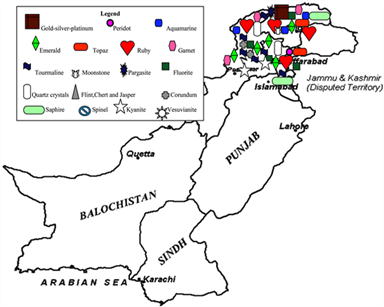
The Map of Pakistan for gemstones and jewelry resources covers regions of GB and AJK as well as some adjoining areas of KPK. The Skardu Division includes Shiger, Israel, Tormiq, Kashmal, Bashu, and Saltoro, that are well-known for producing gemstones. Whereas, Yasin and Gupis Valley are known as potential gemstone-founding areas of District Ghizer in Gilgit Division. Likewise, Hunza, Nagar, and parts of the Diamer Division have constantly attracted investors and businessmen in the stone industry. The Pakistan Gems Corporation was set up to develop this industry, however, due to its poor management and function, it could not bear the desired fruit. Although some other businesses and organizations are operating in this field, Pakistan Gems and Jewelry Development Company (PGJDC) also could not properly harvest and utilize its fullest potential to gain mileage.
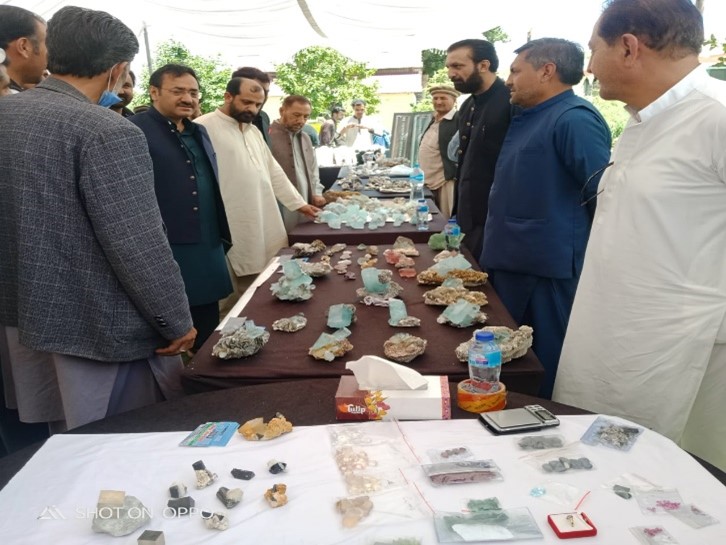
It is heartening that recently, the local government of GB has taken some positive steps to attract foreign traders to the gemstone industry. It has organized two-day events in both Baltistan and Gilgit Divisions pertaining to various gemstones. This was followed by an exhibition in Centaurus Mall Islamabad to draw attention and raise awareness about GB’s rich mineral resources worldwide. Similarly, the opening of the Gemstone Market on Riverview Road beside the twin bridges in City Gilgit is another laudable effort to promote GB’s mineral resources. People of GB are looking towards developed countries like Great Britain with an eye of hope that those countries would take more steps to help promote and develop this local industry of GB and its betterment of this sector with even more generosity.
Speaker GB Assembly, Secretary Mines, and Minerals GB and Director Mines and Minerals visited and observed different gemstone stalls and exhibitions recently organized across GB. Such exhibitions are largely contributing to the development of this sector.
Once, Karachi was the biggest market for gemstones. But now, the shift is towards Peshawer in KPK. Also, PGJDC has been established in major cities like Karachi, Peshawer, Lahore, Quetta, and Muzaffarabad along with Gilgit. The major purpose of PGJDC is to promote gemstone trade in the country. PGJDC asides, other private labs are also available for gemstones identification and testing.
Some areas of KPK which are rich in economic trade gems include FATA, Swat, Dir, Kohistan, Mohmand Agency, Bajaur Agency, Khyber Agency, and North and South Waziristan.

There is some information available about the areas where local miners mine gemstones; the specifics are as follows:
| Sr.No | Gemstones | Mining Area |
| 01 | Aquamarine, topaz , Tourmaline, Apatite, Sphene, morganite and quartz | Skardu, shigar, shengus, stak nala and tormik nala |
| 02 | Apatite, zoisite,rutile quartz, epidote and morganite | Shigar dist. |
| 03 | Aquamarine, emerald, color tourmaline, apatite, morganite, topaz and quartz | Kashmal and yuno (Shigar Area) |
| 04 | Topaz, aquamarine tourmaline, morganite, rare earth minerals, apatite quartz and emerald | Dassu, tahirabad Hyderabad, gyungo (Shigar area Bln) |
| 05 | Tourmaline, garnet, aquamarine , Diopsiode, ruby pargasite,emerald, topaz, amethyst, scheelite and quartz | Baraldu, bashu, and karma (Shigar dist.) |
| 06 | Aquamarine, amethyst, and fine golden rutile quartz | Khapolo, Saltoro near siachen glacier (district Guanche Baltistan) |
| 07 | Topaz,aquamarine,pollucite,rutile,spinel,pargasite and ruby | Hunza, Nagir and Shiger- |
About Author
The Karakoram Magazine
The Karakoram Magazine seeks high-quality, unpublished,nonfiction, first person articles relevant to Gilgit-Baltistan and topics as varied as Geo Strategic & Economic Significance of GB, Arts & Literature, Tourism & Hospitality, Culture and heritage, Education and technology, Health & Wellbeing, Climate Change and Wildlife, Economic & Trade, Sports & Recreations, Youth & Women empowerment and Achievements of Illustrious People of GB in different fields etc.
Business
Magpoondas Special Economic Zone (MSEZ) fruitful for Gilgit-Baltistan
Published
3 years agoon
January 24, 2023
The China-Pakistan economic corridor (CPEC) is a game-changer for the four provinces of Pakistan as well as for the regions of Gilgit-Baltistan and Azad Kashmir. It will become the main connective channel between both states through transport, industry, power energy (electricity), promotion of trade, and tourism. CPEC will be equally important for Central Asia, South Asia, and the Middle East. Under the CPEC, nine economic special zones will be built in different parts of Pakistan. The first economic zones, which will be built in the middle of Gilgit and Skardu city, are called Magpoondas Special Economic Zones. This special economic zone plays a vital role in being peaceful and prosperous in the region of Gilgit-Baltistan. The economic zone created golden opportunities for local people because in G-B region, there are no industries yet. This special economic zone will provide opportunities for increased economic and strategic development. Gilgit-Baltistan is a neighboring region between China and Pakistan. It connects both nations by Karakorum Highway which starts from Khunjerab Pass in the gateway of Gilgit-Baltistan and includes CPEC.
Background of Corridor
China and Pakistan have agreed to build the China-Pakistan Economic Corridor (CPEC), which will connect China’s Kashgar and Pakistan’s Gwadar port through a network of roads, railway tracks, electricity, pipelines, and fiber optics. The CPEC is a significant undertaking that the two countries have completed. The growth of CPEC is extremely significant to both Chinese and Pakistani leaders. During his official visit to Pakistan in May 2013, Chinese Premier Li Keqiang proposed the mega CPEC plan. During President Xi Jinping’s visit to Pakistan in April 2015, both leaders Xi and Nawaz Sharif agreed to promote a 1+ 4 pattern of economic cooperation, with the CPEC playing a central role and four main areas of cooperation, including the Gwadar port, energy market, transportation, and industrial cooperation, in order to achieve win-win outcomes and common growth.
The economic corridor is a plan aimed at bringing regional economies together. It is a 62-billion-dollar initiative that stretches from Kashgar, China, to Gwadar, Pakistan, which involves the development of a 3000-kilometer road network.
Following projects run by this corridor
- Highways and railways, as well as oil and gas pipelines
- Special economic areas in various parts of Pakistan,
- Fiber optic and manufacturing sectors, and
- Electricity projects.
- Nine special economic zones a cross Pakistan
It snakes through the mountains, twists, and turns, up and down ways, and covers 800 KM in (G-B) region. The people of G-B have some apprehensions about the unequal distribution of rights but the government of Pakistan ensures to the people of the region that in this project they will receive equal rights like other provinces. This study intended to provide every aspect of one belt one route concept and its effects particularly on the beautiful northern region of Pakistan. Since the start of the CPEC, China has emerged as Pakistan’s greatest investor, with $8 billion in inflows and $2.1 billion in outsourcing, accounting for 36% of Pakistan’s net investment,” she told conference attendees. She took advantage of the opportunity by highlighting Pakistan’s advantages for overseas investors, including a one-time customs duty exemption and a 10-year income tax vacation for both SEZ developers and businesses.
Geography of Moqpondass:
The special economic zone is around 35 kilometers from Gilgit Airport and 160 kilometers from Skardu Airport. Also, the property is located on Gilgit-Skardu Road, which is four kilometers away from the CPEC route. The Moqpondass is located at The Junction of the World’s three Mountains, Karakorum, Himalayas, And Hindukush; The Magpoondas is Suited in the Vital location among Gilgit, Skardu, and Islamabad. The Special Economic Zones are 457 Kilometers far away from Islamabad, 40 Kilometers far from Gilgit and 160 Kilometers distance from Skardu.
Geographical location of Special economic zone
Magpoondas Special economic zone:
Moqpondass is a proposed priority SEZ in Gilgit Baltistan (G-B), which is surrounded by Afghanistan to the north, China to the northeast, and the Pakistani governed state of Azad Jammu and Kashmir to the south (AJK). The zone is part of the China Pakistan Economic Corridor (CPEC), a huge initiative in which the government has opted to develop nine special economic zones (SEZs) in each of Pakistan’s four provinces, as well as Azad Jammu & Kashmir and Gilgit Baltistan, to boost trade and business. The Moqpondass Special Economic Zone is a successful approach for encouraging commerce, job creation, and economic growth in Gilgit-Baltistan. Moqpondass is a special economic zone being built along China’s western border. The economic zone covers a total of 250 acres and is located in the heart of Skardu, Gilgit.
The following projects will be constructed in the economic zone:
Industrial potential
- Water-Cleaning unit
- A fruit-Processing unit
- A Mineral-processing unit
- A steel-and-Iron unit
- A Marble-processing unit.
- Dry fruit unit
- Forestry
- Gem
- Livestock
- Wood
- Furniture
- Wood carving
- Chipboard, hard board
- Herbs
- Processing
- Medicine production
- Trout fish
- Processing
- Packaging
- Fruits & vegetable
- Processing
- Packaging
- Branding
- Gemstones
- Cutting, faceting
- Polishing
- Branding
- Minerals
- Processing
- Value addition
- Finished products
Iron ore processing, fruit processing, and value addition, steel industry, mineral processing and value addition, leather industry, marble, and granite. The government intends to establish industries in several sectors in the Moqpondass industrial zone, including marble, granite, iron ore processing, fruit processing, steel industry, mineral processing unit, and leather industry. At Magpoondas fruit processing industries, precious Gemstone cutting and polishing center, iron & steel industry would be constructed in future.
Advantages of Moqpondass:
- The special economic zone will create job opportunities for the locales. The region is the water store body for Pakistan; it also produces electricity for other provinces of Pakistan.
- Special areas would operate as a powerful economic encouragement for Pakistan’s government to implement reforms that will strengthen the domestic business climate, productive capability, export base, and commercial appeal for additional international investment.
- The Special economic zones would-be creators of jobs for the country’s massive underemployed population, particularly its rising educated workforce and also locals of Gilgit-Baltistan.
- The special economic zones’ efforts to enhance capacity through vocational and technical training will aid the local workforce in catching up in terms of quality skills.
- Possibility of attracting Pakistani diaspora back to Pakistan with their skills and experience gained while working overseas, as well as their earned cash, for more advantageous opportunities in the country.
- The critical opportunity to improve Pakistan’s technological standing through close collaboration with Chinese enterprises and institutions.
- SEZs would allow for labour pooling, lowering job search costs for workers’ and employers’ and. As a result, reduction in the level of the unemployment talented workers.
- The business zone creates backward links with China’s enormous market and SEZs can help to build a robust and long-term corporate integration through trade and investment.
Main Technical Data of SEZ
- Parking area
- Rescue Service
- Commercial area
- Modern Telecommunication system
- Masjid with green garden and sports area.
- Fuel/gas station
- Weigh bridges , securities, Effluent Treatment plant
- Grid station
- Worker colony.
- Hospital.
- School and Vocational & Technical Training Center
- Administration/government offices.
- Exhibition hall & business centers.
- Hotel, restaurant, mess, etc.
Future master plan of SEZ
Conclusion
The creation of special economic zones will bring peace and prosperity to Gilgit-Baltistan. In the twenty-first century; the era of globalization, the globe has transformed into a village. It has eased everyone to comprehend and interact with one another. The Moqpondass special economic zone plays a critical position in the region at this juncture. It would become simple to communicate with the rest of the world via optical fiber, allowing the locals with rich culture and tourism industry to showcase to the rest of the globe. In the future, it can be possible that train service begins between China and Pakistan, which would be vital for G-B, because the railway track will be starting from China to Gilgit-Gwadar port. With the inception of the special economic zones, modern technologies will be used for cleaning water, fruit processing, mineral extractions, and many other projects.
Muhammad Ismail
The writer is a visiting lecturer in the Department of Politics and International Relations at Karakoram International University, Gilgit.
About Author
The Karakoram Magazine
The Karakoram Magazine seeks high-quality, unpublished,nonfiction, first person articles relevant to Gilgit-Baltistan and topics as varied as Geo Strategic & Economic Significance of GB, Arts & Literature, Tourism & Hospitality, Culture and heritage, Education and technology, Health & Wellbeing, Climate Change and Wildlife, Economic & Trade, Sports & Recreations, Youth & Women empowerment and Achievements of Illustrious People of GB in different fields etc.
Business
The Role of Business Incubation Center, Karakoram International University in Empowering the Youth of Gilgit-Baltistan.
Published
3 years agoon
January 22, 2023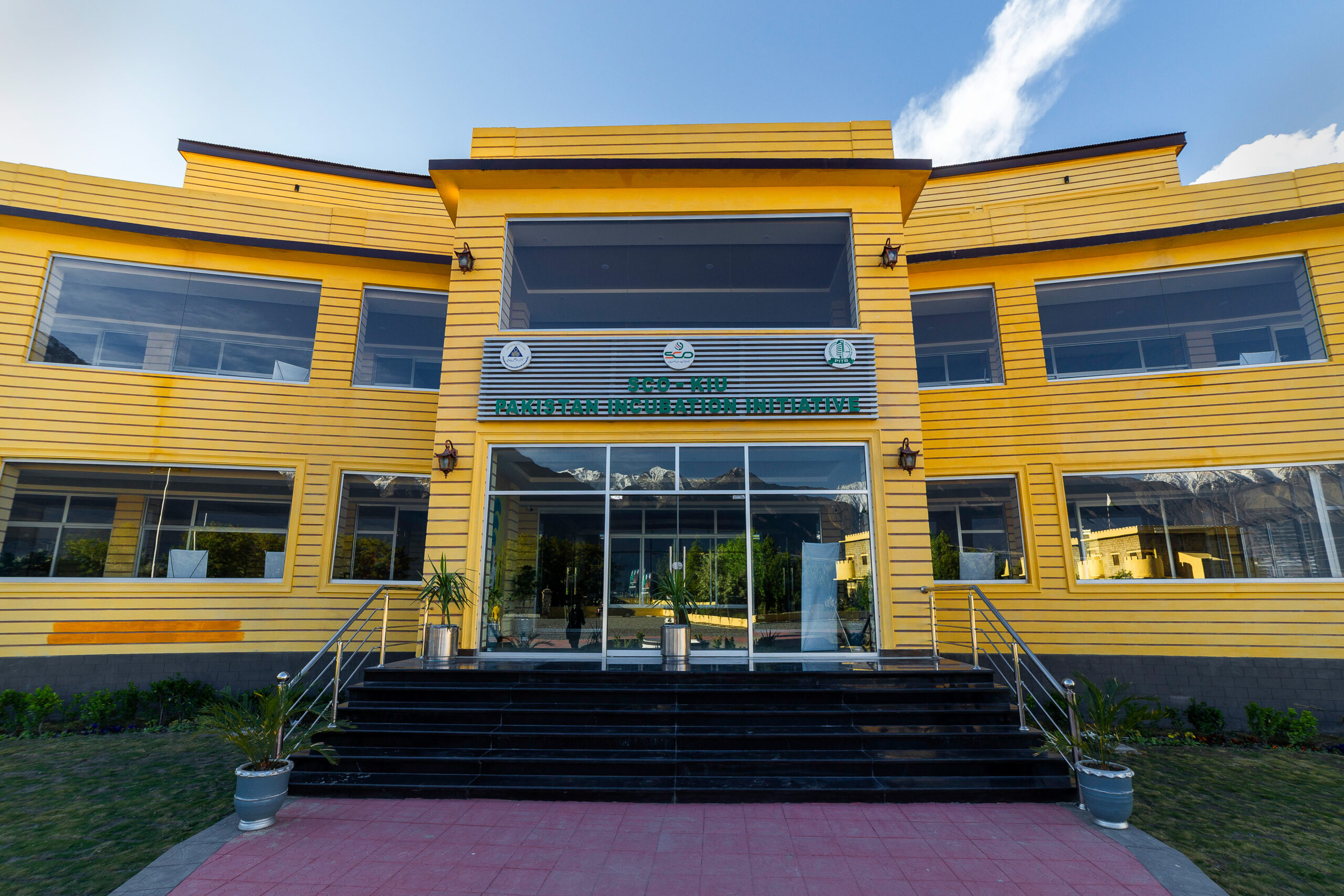
Imagine someone would like to start a business but he is facing several challenges such as shortage of funds, time, skilled personnel, lack of business acumen and a space to work from with ease and peace. It is due to these and similar other challenges that dampen our youth from becoming entrepreneurs and future employers. Consequently, they often knock their selves out to a different corner of job seekers, the number of which is growing exponentially. Yet, very limited job opportunities are available in the existing turbulent economic conditions.
Particularly, in Gilgit-Baltistan – a far plunged area of Pakistan – with no large-scale industries or major economic activities, the youth often look up to the government for employment. It is no wonder that public sector of Gilgit-Baltistan is then the largest employer in the region with more than 1 lakh employees as I write this article, a huge burden on the exchequer.
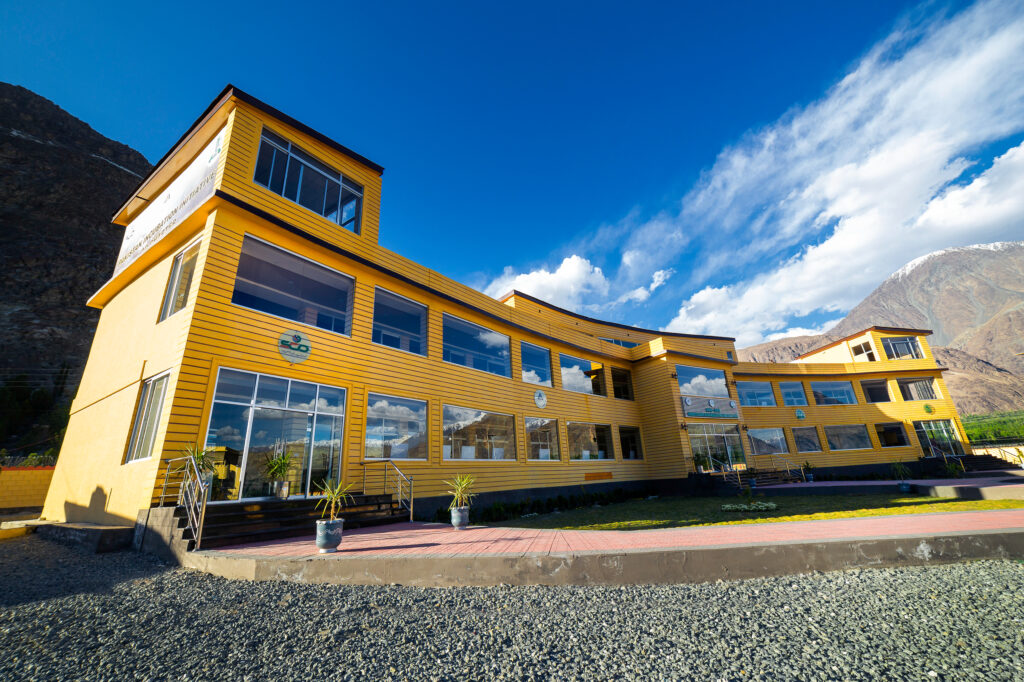
To augment the challenge even further, our society in general and our parents in particular think that success is only achieved if one becomes a doctor or an engineer. Those who are left out from these two fields are expected to pass competitive exams and become bureaucrats. It does not end here. The remaining are expected to have some sort of permanent government jobs (pakki naukri) to be considered successful. Entrepreneurship or starting your own business is not on the menu at all and therefore, it could not pull enough traction in the past. This is a huge bottleneck and culture taboo that needs to be broken if we want to create a sustainable entrepreneurial ecosystem, reduce the pressure on government exchequer and create a thriving economy by making entrepreneurship as a viable alternative career path.
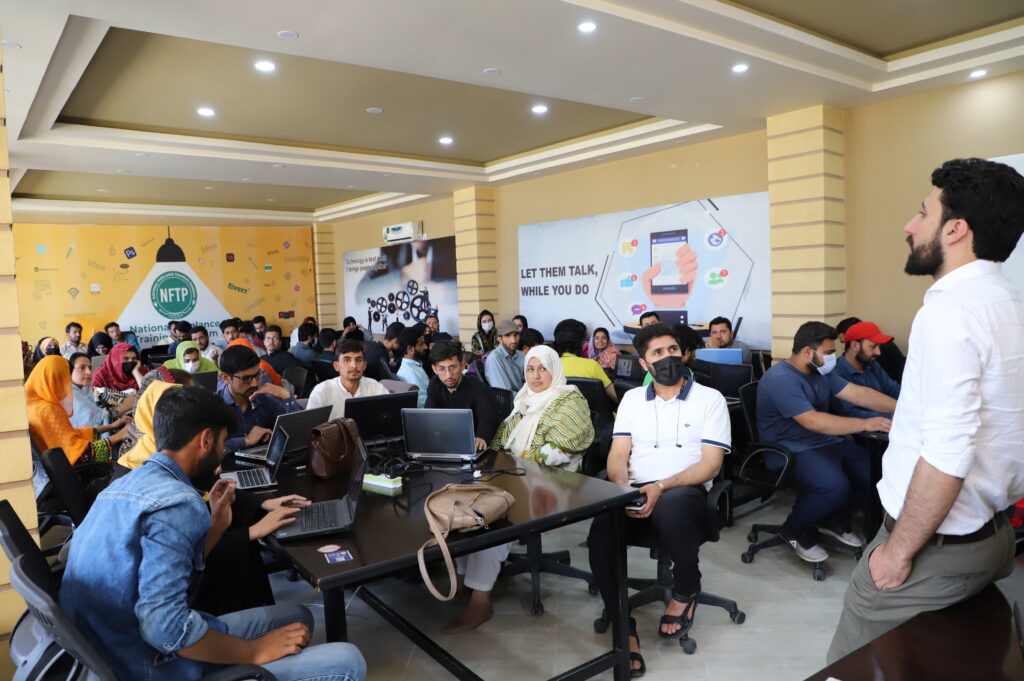
To this backdrop, Karakoram International University (KIU), Gilgit with the help of Higher Education Commission (HEC) of Pakistan embarked upon establishing its first business incubation center (BIC) at its main campus in 2016. The purpose was to provide basic infrastructure and allied facilities for researchers and young entrepreneurs who would like to turn their ideas into reality. Thanks to the financial support from HEC, KIU was initially able to create a small co-working space and a dedicated lab for its students. The co-working space has the capacity to host 8 to 10 people whereas; the dedicated lab has 25 computers with high-speed internet facility for the students, free of cost. Since its inception, KIU-BIC has hosted approximately 50 small business ideas among which, 8 to 10 are successfully running their own businesses. KIU-BIC has conducted numerous awareness and training sessions for 5000+ students and engaged with several partners to create a sustainable entrepreneurial ecosystem in GB.
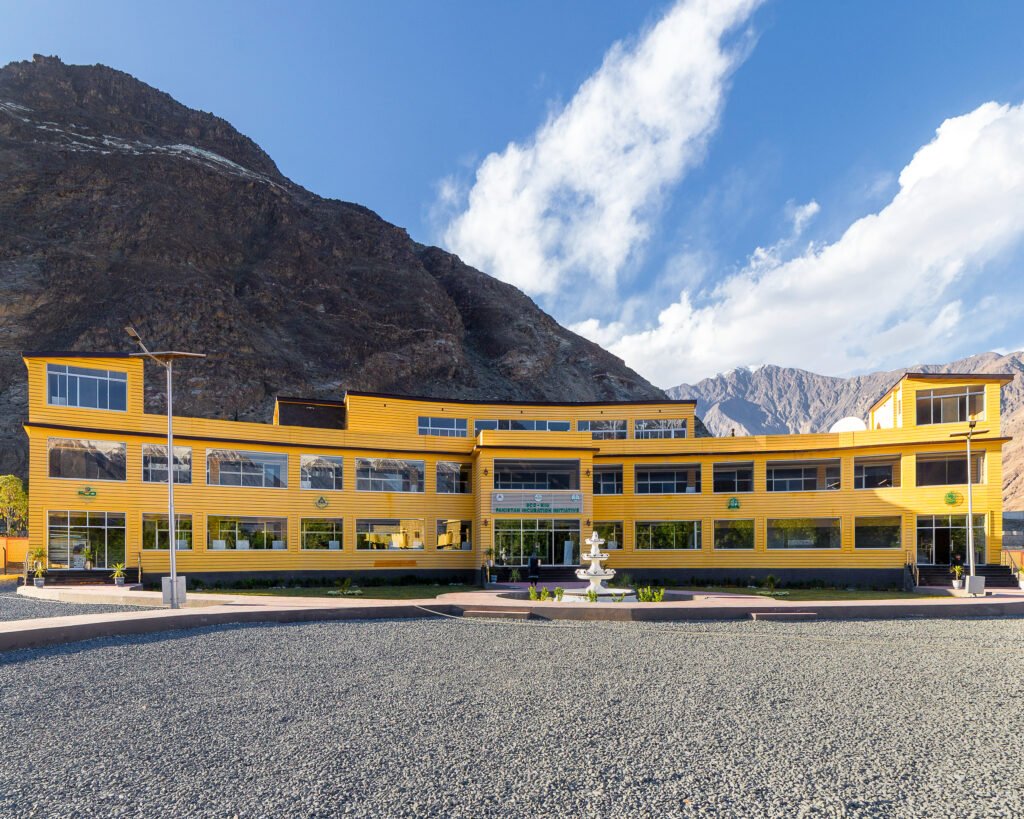
However, I personally believe in extending such facilities and increasing our existing capacities to accommodate even more start-ups. We are lucky enough that the top leadership of KIU also realizes this need and that is why, KIU in collaboration with SCO and Punjab IT Board, has already successfully refurbished a large, dedicated building with the name Pakistan Incubation Initiative which can capacitate more than 100 people at a time. The new location will host at least 20 – 25 startups (15 with our collaborating partners and 10 at KIU-BIC from our own funding) for a 6 months period. Along with our partners, we will provide them free coaching and mentoring sessions on all the challenges that I have mentioned in my starting paragraph. All the start-ups will enjoy non-stop electricity, free co-working space, training, development and networking opportunities with investors, lenders and granting agencies. Among the 15 start-ups, 10 will be paid stipend as well. Every six months, new batches of start-ups will be hosted at KIU-BIC which will accelerate and strengthen our efforts even further.
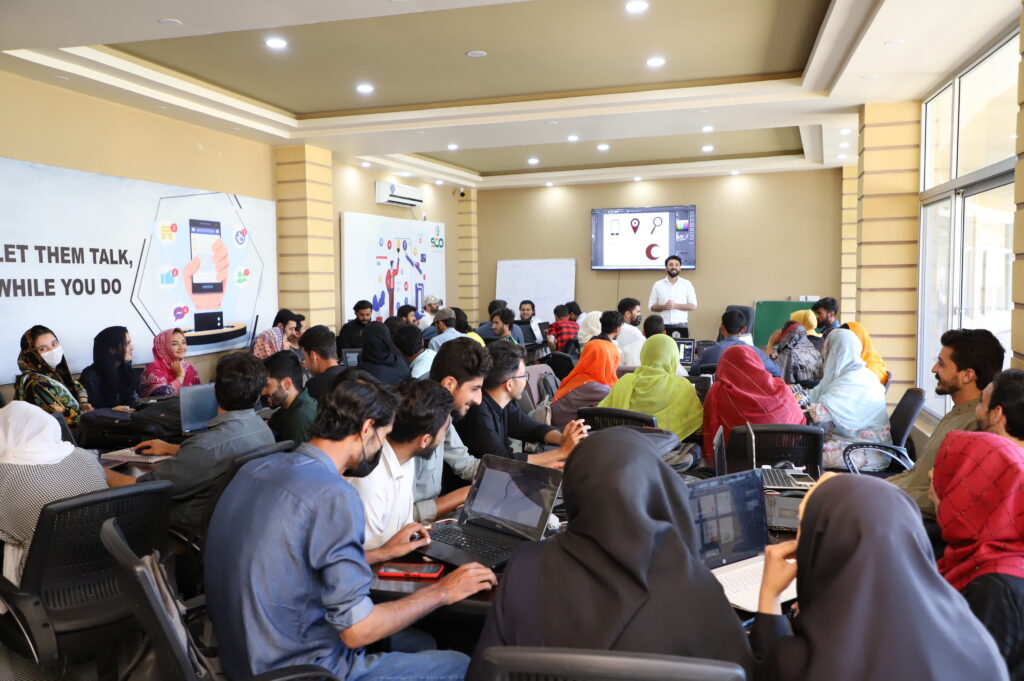
I believe that this is going to be a turning point for the youth of Gilgit-Baltistan and a foundation of a real game changer for the economy of the region. These startups will not only reduce pressure on the government for employment, but it will also kick start a huge economic activity across GB. Resultantly, employment opportunities will be created, and youth will be more empowered.The developed world realized this importance of entrepreneurship and a strong entrepreneurial ecosystem in the late 80s and 90s. In Pakistan, although this realization is not very old, it is better to be late than never. Focusing on promoting entrepreneurship is even more imperative in the context of 4th industrial revolution which is largely driven by technological developments. It is believed that those who could not catch up with the technology and are not well versed with the same will be considered illiterate after a decade or so. KIU-BIC recognizes this fact and is leaving no stone unturned to catch up the bandwagon. I think it is high time for all our youth to pull up their socks and get the most out of the existing opportunities available. I also invite public, private, and not-for-profit organizations to join hands and support us in keeping this momentum on. I am hopeful and very excited for the future of our youth in GB. Together, we shall do wonders, Insha’Allah.
About Author
Dr. Ifzal Ahmad
The writer is the former Director of the Office of Research Innovation and Commercialization at Karakoram International University, Gilgit.

Muhammad Azeem Khan: Pakistan’s Number One Amateur Featherweight MMA Fighter

A Drop for a Click: The Silent Cost of Our Digital Thirst

10 Places to Visit in Hunza – Stunning Natural Wonders You Can’t Miss
Latest
-

 Tourism3 years ago
Tourism3 years ago15 Best Places to Visit in Skardu
-

 Arts, Culture & Heritage2 years ago
Arts, Culture & Heritage2 years agoTraditional women’s dresses of Gilgit-Baltistan
-

 Tourism3 years ago
Tourism3 years agoThe Ultimate Travel Guide to Gilgit-Baltistan: Land of the Mighty Mountains
-

 KIU Corner2 years ago
KIU Corner2 years agoA Guide to LMS KIU Student Login – KIU
-
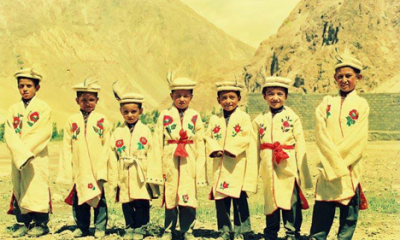
 Arts, Culture & Heritage2 years ago
Arts, Culture & Heritage2 years agoShuqa Simple but amazing winter clothing of Gilgit-Baltistan
-

 Current Affairs3 years ago
Current Affairs3 years agoStrategic Importance of the Wakhan Corridor
-

 KIU Corner2 years ago
KIU Corner2 years agoEmbracing Challenges: Gul Rukhsar’s Remarkable Journey
-
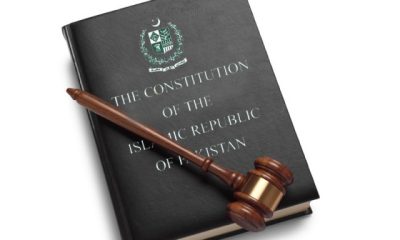
 Opinion3 years ago
Opinion3 years agoThe Constitution of Pakistan: 50 Years of History, Significance, and Challenges


